What is aberration?
- Distortion of an image from the ideal optical image is called aberration.
- An ideal optical image satisfies the following three conditions.
- A point object creates a point image.
- A plane object perpendicular to the optical axis creates a plane image.
- A figure on a plane perpendicular to the optical axis creates an image similar to that figure.
- There are the following 5 types of monochromatic aberration, caused by the shape of the lens (these are called the Seidel aberrations, named after the researcher Seidel);
- Spherical aberration
- Coma
- Astigmatism difference
- Curvature of field
- Distortion
. . . and there are the following 2 types of chromatic aberration, caused by the material in the lens. - Longitudinal chromatic aberration
- Lateral chromatic aberration
| Aberration type | Pin hole specimen image | Explanation | |
|---|---|---|---|
| Undistorted ideal optical image | 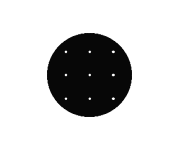 |
Regardless of whether the light is on the axis or off the axis or regardless of wavelength, light emitted from a point intersects in a point and forms a plane image. Plan Apo and other microscope objectives are near to the optically ideal. |
|
| Monochromatic aberration | Spherical aberration | 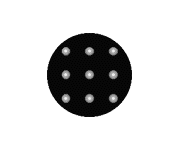 |
This aberration is proportional to the NA to the power of 3, and is independent of the width of the field of view. This is the only aberration which still appears at the center of the field of view. It appears as a circular blur, and is the source of all kinds of aberration; the more the NA increases, the more difficult it is to correct. For an objective of a microscope, it is necessary to correct it sufficiently. |
| Coma | 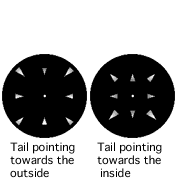 |
This aberration is proportional to the square of the NA and linearly proportional to width of the field of view. It is noticeable even in a narrow field of view, so it is necessary for the objective of a microscope to minimize this as much as possible. The center of the field of view is sharp, but as you approach the edge of the field of view the comet-shaped blur gets larger. |
|
| Astigmatic difference | 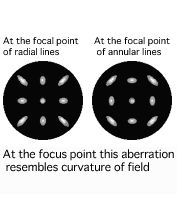 |
This aberration is linearly proportional to the NA and proportional to the square of the width of the field of view. When a sharp image is required to the edge of the field of view then it is necessary to correct the Plan objective or wide field eyepiece. In this aberration, for one off-axis object point there are two image points, so an image that should be a point becomes two lines at right angles to each other. If the focus is moved then the image becomes a long horizontal, a circle, and a long vertical. At the focus point this aberration is similar to curvature of field. |
|
| Curvature of field | 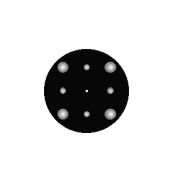 |
This aberration is linearly proportional to the NA and to the square of the width of the field of view, and it becomes very noticeable when the field of view widens. This is a circular blur, and at the center of the field of view and at the edges the focal point is moved. Even when the focal point is moved the blur remains circular. Likewise astigmatism, this aberration must be corrected with a Plan objective or a wide field eyepiece. |
|
| Distortion | 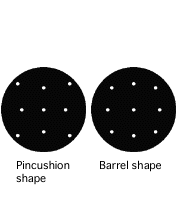 |
This aberration is independent of NA, and is proportional to the width of the field of view to the power of 3. This is the only aberration where there is no blur, and even if you reduce the NA the aberration still remains. Distorted rectangular shapes are formed. In the case of the objective of a microscope or a wide field eyepiece the pincushion shaped distortion is most common. In the case of an objective, the angle of view is small, so it is not often a problem. However, for a wide field eyepiece it is necessary to correct it sufficiently. |
|
| Chromatic aberration | Longitudinal chromatic aberration | 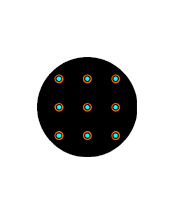 |
This aberration is linearly proportional to the NA and independent of the width of the field of view. It is necessary to correct for this in an objective. Depending upon the amount of correction it classifies into Achromat and Apochromat, etc. The focal point varies depending upon the color, so the aberration appears as a dispersion of color regardless of whether the point is on or off the axis. In confocal optical systems this aberration is noticeable, so it is necessary to use an Apochromat objective. |
| Lateral chromatic aberration | 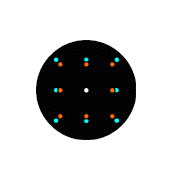 |
This aberration is independent of the NA, and linearly proportional to the width of the field of view. As the image magnification for each color is different, a bias of color appears off the axis. An objective tends to distort blue light in the radial direction because of its construction. In the Nikon CFI60 optical system, this aberration is corrected independently in the objective. |
|
-
- In a real optical system, the above seven aberrations are mixed, so the image becomes complex.

